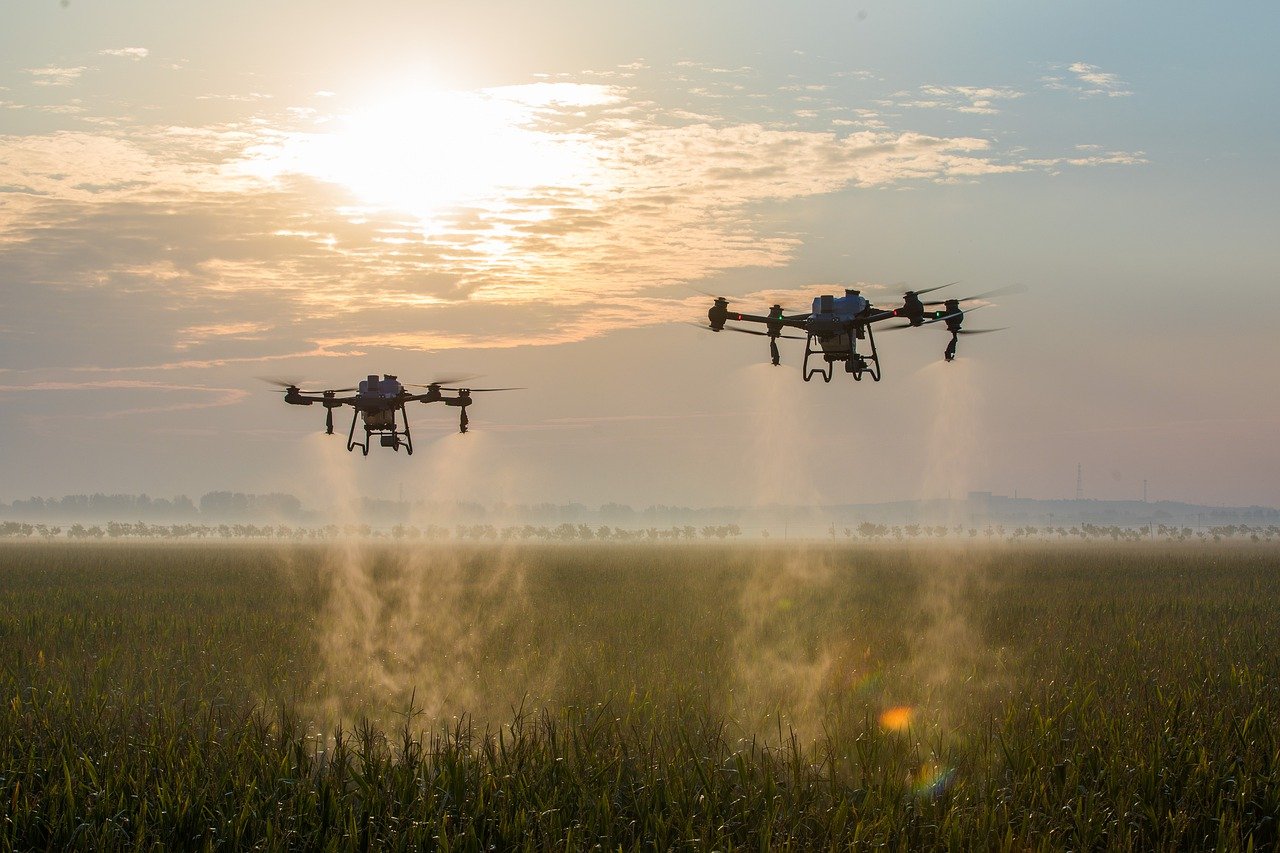Drones in Agriculture
Agriculture is the backbone in most of the countries. Farmers work hard in the field and harvest the crop around the year.
Technology is automating human tasks and reducing manual labor in all industries.
In the 2000s, farmers did not widely use drones, and many farmers still cannot afford them today.
The world’s population will increase by 9 billion in 2050, leading to a greater demand for food that today’s farming methods cannot meet. New ways of increasing food production are necessary.
Therefore, it is critical to incorporate technology in every village to tackle this challenge.
Drones transformed the agriculture industry by making it more efficient and environmentally friendly. Drones have many uses, including helping farmers keep their crops healthy.

Farmers use drones to check on the plants and apply fertilizer and bug spray.
Earlier, farmers relied on laborers to monitor crops, assess field conditions, and identify any issues with crops.
This process is not only time-consuming but also leads to human errors.
However, with drones in agriculture, farmers now have a tool that can provide them with real-time and accurate data about their crops.
Capabilities of a drone in agriculture
- Drones can fly over the fields up to 50 – 100m.
- Drones can travel a 2- 10km distance to monitor the crop.
- Capture high-resolution images of crops.
- The drone gathers information from various sensors such as soil moisture, humidity, temperature, and elements.

By analyzing these images, farmers can detect crop diseases, nutrient deficiencies, irrigation problems, and pest infestations at an early stage, and prevent potential losses of their crops.
The drones in agriculture unburden farmers’ work from daily manual monitoring of crops to weekly monitoring.
Benefits of Drones in Farming
Drones in agriculture increasing efficiency, and transforming farming practices.
Unmanned aerial vehicles (UAVs) can complete the tasks with their advanced technology and capabilities.
Efficiency using drones
One of the key benefits of using drones in agriculture is the increase in efficiency for the farmers.
In the olden days, farmers spent hours inspecting the field, monitoring irrigations, dependencies on labor, etc. This process was not time-consuming but sometimes prone to human errors.
However, drones can now complete these tasks with accuracy in just minutes. With the help of high-resolution cameras and sensors, drones can capture detailed images of crop parameters.
This real-time information helps farmers to make timely decisions and helps farmers to get more yield from the crop.
Furthermore, drones are used in agriculture to reduce physical strain on farmers and efficiently inspect.
As drones can fly at higher altitudes and speeds, they can quickly survey vast fields to identify any issues on the field.
Precision agriculture
By analyzing the aerial imagery captured by drones, farmers can create detailed crop maps that highlight variations in vegetation vigor, moisture levels, and other important parameters.
Using advanced drone technology and machine learning in Precision Agriculture leads to increased crop yields and profitability.
This way, farmers benefit from more yield, reduce waste, and contribute to a more sustainable and efficient future of agriculture.
Crop monitoring using drones
Earlier, accessing crops’ health and resources used to manage crops, was time-consuming for farmers in the fields. With the introduction of drones in farming, this process has become significantly more efficient and accurate.
By analyzing the aerial images captured by drones, farmers can create detailed crop maps that highlight variations in vegetation crops, moisture levels, and other important parameters.
This way, farmers benefit from more yield, reduce waste, and contribute to a more sustainable and efficient future of agriculture.
Pests control
Farmers have relied on manual inspection and labor to identify and mitigate pest infestations. It costs farmers a lot of money to buy labor.
Now, using advanced imaging technology, drones can swiftly and accurately detect signs of pests and diseases in crops.
Drones can identify subtle changes in plant health that may indicate the presence of pests or diseases.
Crop spraying
Farmers depend on laborers and tractors for crop spraying to protect their farms from pests.
Using drones for crop spraying benefits farmers by covering large areas quickly and reducing manual labor, allowing them to focus on other tasks.
Moreover, drone spraying offers precision and accuracy in pesticide application.
With advanced sensors and GPS technology to navigate the fields, drones can precisely target specific areas of crops, ensuring that the right amount of pesticide is applied.
This targeted approach minimizes the risk of over-spraying or missing areas, resulting in optimal pest control and reduced chemical wastage.
As the agricultural industry struggles with the challenges of a growing global population and limited resources, the adoption of drone technology presents a promising solution to farmers worldwide.
Conclusion
Drones in the agriculture industry help in many ways, offering a wide range of benefits and highlighting their importance in modern farming.
From crop monitoring to precision spraying and soil analysis, drones have proven better tools for farmers around the globe.
